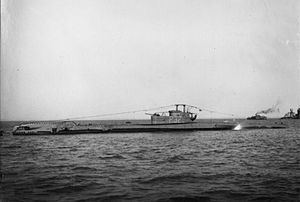Name HMS Tradewind Commissioned 18 October 1943 Launched 11 December 1942 Beam 8.4 m | Laid down 11 February 1942 Construction started 11 February 1942 Length 84 m | |
 | ||
Fate scrapped 14 December 1955 Displacement 1,290 tons surfaced1,560 tons submerged | ||
HMS Tradewind was a British submarine of the third group of the T class. She was built as P329 at Chatham, and launched on 11 December 1942. So far she has been the only ship of the Royal Navy to be named Tradewind, after the Trade winds.
Contents
Second World War service
She spent most of her wartime career operating against the Japanese in the Far East, attacking enemy shipping and laying mines. She sank nine Japanese sailing vessels, and two small unidentified Japanese vessels, a Japanese tug and the Japanese merchant tanker Takasago Maru. The Japanese merchant cargo vessel Kyokko Maru was sunk after hitting a mine laid by Tradewind.
Her most infamous sinking was of the Japanese army cargo ship Junyō Maru which was headed for Sumatra, on 18 September 1944. Unbeknown to the Commanding Officer of Tradewind, Lt.Cdr. Lynch Maydon, the Japanese ship was carrying 4,200 Javanese slave labourers and 2,300 Allied prisoners of war from Batavia to Padang. 5,620 lives were lost in the sinking.
Post War service
Tradewind survived the war and was modified in July 1945-September 1946 to become an acoustic trials submarine and used for tests. The modifications included the removal of external torpedo tubes and guns, the bridge was faired, the hull streamlined and some internal torpedo tubes blanked over. Measurements made using Tradewind were used to overhaul several of the T class boats to increase their ability to act stealthily against Soviet submarines and surface ships.
In 1953 she took part in the Fleet Review to celebrate the Coronation of Queen Elizabeth II. She was eventually scrapped at Charlestown on 14 December 1955.
